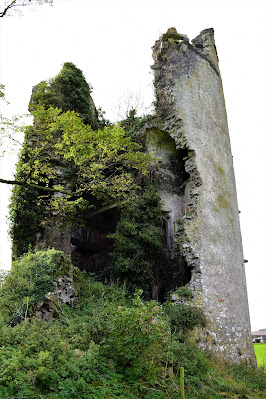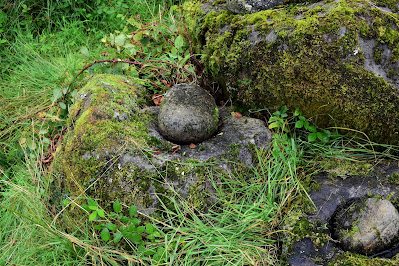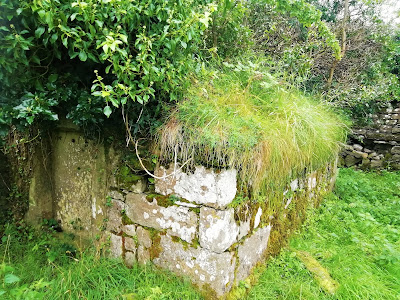Tower Houses are usually percieved as upright rectangular structures resembling a small Castle. In fact they are more often than not called Castles rather than Tower Houses.
There are however a few circular exceptions to the usual rectangular shape we associate them with. I have no idea exactly how many circular Tower Houses there are in Ireland but I've come across at least three that spring to mind.
Given their unusual shape and presumably rare occurance in the Irish architectural landscape it would be reasonable to believe that their preservation would be of the utmost priority but unfortunately that doesn't seem to be the case.
I'm not even sure circular Tower House is the right description for them. Perhaps to be geometrically correct I should refer to them as tubular Tower Houses. That sounds like a good name for a Mike Oldfield composition, a surefire hit.
Leaving my waffling quickly behind I'll get to the topic of this post. Grantstown Castle in Laois is an example of an unusual circular Tower House. It is located on private land but the owner was very welcoming and was happy to let me cross his land to have a look at the Castle.
Viewed from the road the Tower House looks in good shape but on closer inspection while walking around it there was very obvious evidence of a large amount of bad structural damage.
The walls have completely collapsed in places and there is no roofing at all.
It was described as "roofless" but in good condition in 1905 (Carrigan 1905 vol. 2, 63).
The Tower House at Grantstown is beside a lake, Grantstown Lake.
It appears to offer recreational angling and looks like a nice place to visit in its own right though I didn't visit it myself.
Archaeological records show a Crannóg existed here on the lake at Grantstown.
A Crannóg is a man made Island usually constructed by driving wooden wedges and stakes into a lake bed and dropping further material onto that base.
Small huts and houses can then be constructed on the Crannóg and the surrounding water acts as a natural defensive barrier.
They are usually associated with the Iron age but were used in certain places right up until the early medieval period.
At one time Grantstown Castle belonged to Gilbert Rawson Quartermaster of his Majesty's Regiment of Guards in Ireland.
It then came into the possesion of Edmond Morris who was killed at the Battle of Aughrim in Galway and his estate was forfeited.
Edmond's wife and children petitioned for the Castle and land but their plea was dismissed before finally the Castle was granted to the Fitzpatricks by William of Orange in 1696. It may originally have been a Fitzpatrick Castle before Rawson occupied it in the first instance.
There is a troubling feature of Grantstown Castle that is not unique to this particular Tower House and which is the disturbing lack of conservation materials or works that appear, or should I say don't appear, to have taken place in order to avoid the total collapse of the building.
The landowner has taken time and effort to fence off the structure and keep cattle out. State investment in the preservation and protection of these type of buildings would be of help I should imagine.
Tangible physical intervention would be nice to see alongside the existing statutory protections which are already in place but can do little to stay the tide of decay and eventual collapse.
52°52'06.4"N 7°30'34.7"W
52.868436 - 7.509637
The Peerage of Ireland - Google Books




























